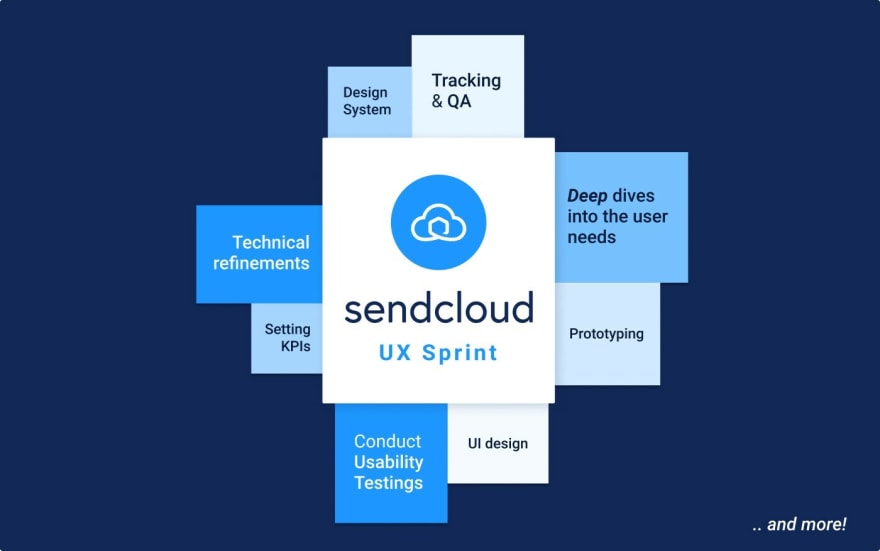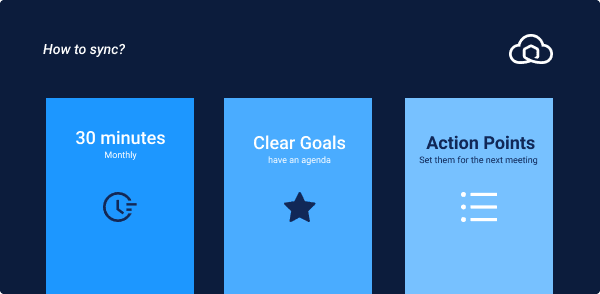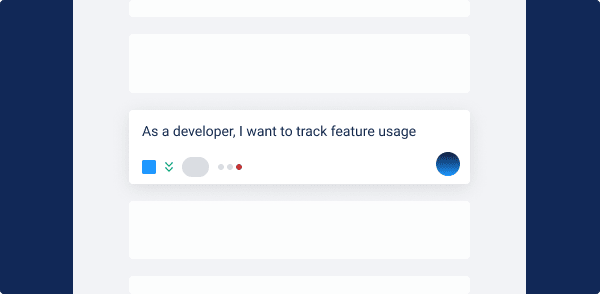When it comes to starting the development of a new feature, the UX team is usually called to gather data and provide coherent flows that will impact the user journey positively and, hopefully, provide higher value in the user lifetime. When the UX department, or better the design and research department, consists of two (amazing) women against 25+ developers in an agile environment, the expectations are much higher. Let’s say that delegating is not an option. Our tasks don’t just revolve around managing the user experience — we are also in charge of conducting in-depth desk and field research and managing communication with stakeholders. In a typical sprint we can be found doing anything from:
The list can often be longer if we include DesignOps and user-centered advocacy, but I’m not here to bore you!
To be honest, designing features 360 degrees is a great opportunity for a UX designer and I feel extremely lucky to be given so much trust, but it can be exhausting to be in a one-man show. If you are also a UXer in a developer’s world, I would like to provide you with some insight on how we structured our UX process at Sendcloud. Feel free to leave comments and to advise us on better practices to follow, we will be forever grateful.
Today, I would like to talk about how we gather enough knowledge to start working and ideating on a new project or iteration. I won’t tell you how to do it, because I’m not even sure we know what we are doing (we know, I’m joking), but I will make sure to share enough details on how we do it and why.
Learning the business: Trend research & competitor analysis
Our job entails designing a B2B2C solution that involves shipping and logistics for eCommerce throughout Europe, and I can tell you — it ain’t easy. In general, the topics are usually very complex and involve a vast net of stakeholders. Let’s give an example: our internal and external stakeholders would like us to build something related to delivery methods in a shop checkout. This could be anything, but it needs to involve this specific step of the buyer and the seller’s journey. When the brief is so open, we have the possibility to take a step back from solutions and concentrate on understanding trends and general knowledge regarding that specific topic.
Generally, I like to embrace the unknown and find reliable material to study. Most of the time, consultancy companies (especially the big 5) create annual or even quarterly whitepapers about different innovations and trends in services. Those reports are not scholarly papers, but they usually cover a vast amount of topics and fields. Moreover, they are written by the big boys.
They can often afford to conduct surveys with a large sample of people, and if you are lucky enough, they probably asked some valuable questions for your target audience.
Remember to read some of those and to make sure they are recent studies: never trust one source and old news.
Usually, these reports help me to understand what is the general business value and, sometimes, to retrieve some initial user insights and needs. Plus, they usually are an easy way to access quantitative data, which is most useful when you need to pitch the idea to the entire company.
What is also interesting is to look at what your competitors are doing. You have probably heard it a thousand times over, but competitor analysis still remains one of my favorite things to do. Now, I’m not asking you to complete a full-blown in-depth analysis (why not leave that to marketing?), rather gain insight into what others are doing in the field. This builds an understanding of what is necessary to have and what features can make the difference in the user journey and workflow, especially for a B2B solution.
Talk to your colleagues: stakeholder syncs
If in the previous section we aim to understand the basics of the project, here we try to gather enough support in the company to help us with gathering more users and leads insights. Generally, in a tech company, the product owner is expected to have recurring meetings with sales and marketing, to establish priorities and shape the future of the product. However, their forte is not gathering quantitative data, and UX remains detached from the conversation.
Where you might see missed communication opportunities is in Sales, who speak to clients on a daily basis. Generally speaking, this actually collects many valuable insights for the UX process, which unfortunately get lost in platforms such as Hubspot. Recently, my team (Caroline and I) decided to start having our own sync with sales and marketing. These sessions provide the opportunity to speak about missing features, and why those are so important for the user. We also learn how to read between the lines, and we start understanding and seeing patterns in user behavior and needs. Moreover, the constant contact that those departments have with our users and our future users, make them the perfect detectives.
There are a few rules to remember: keep it short, come prepared with what you want to know more about, make sure to set action points to show your colleagues that their input will be actively used.
If we are lacking insights on a new possible feature or on the adoption of an existing one, we get them to ask some more specific questions to the people they will talk to. In this way, we can gather some data quickly that otherwise would have taken us much more time to collect. This allows us to see what features we need to get more sales, and thus a mutually beneficial department relationship is formed!
One tip, if you are starting to ask other departments to gather user insights, make sure to be specific in your request and make sure they are aware of the context you are researching on. If it’s not clear to them, the data gathered could be biased or too general.
Let numbers talk: data & analytics
At Sendcloud our design decisions are data-driven rather than basing them solely on our own ideals. As designers, we understand that the end-users experience has a learning curve, and when we assume what they can understand, we don’t address why or how they understand the product. Analytics can help not just when designing new features but through-out the iterative process.
How do we design with data in mind and as an iterative process? By continuously running A/B testing. This helps us understand how new features or changes can improve the user experience. Sometimes, even the most minor changes can have a substantial impact. But this is not the only way to gather data, I will also discuss how you can ask users directly through interviews and surveys.
“Don’t change something If It’s not broken”
But how do you know when you should change a product or service? Our process involves beta testing before we complete a roll-out, which means we release a feature to a small group of users, allowing us to gage If the user will actually use a feature from their feedback. This provides us with data to improve our UX before the feature is rolled out.
It’s also important to plan for tracking feature usage while refining a user story. We can only define a feature “successful” if we have the means to monitor its usage. Talk to your team and decide which events need to be tracked. We usually combine backend events with frontend ones, and we make sure to aggregate them in an analytics tool for easy reporting. We are currently using Mixpanel, which provides clear developers documentation.
Lean UX: feedback repository & NPS scores
Did you ever have sales, support, or other departments providing you with user comments? Did you ever think “I need to remember this”? At Sendcloud, designers are often swamped with user feedback (and it’s honestly great). One day, tired of losing precious information through Slack or Emails, we came up with the idea of creating a user feedback repository. Essentially, we created a place where we could gather and tag user feedback incoming from different sources, from colleagues to NPS scores. To make sure we would not have to do too much manual work, we created a # feedback channel on Slack and asked our colleagues to share customers’ feedback directly in that channel. This did not only stimulate many people to contribute to the cause of making our platform more user-centered but also created more transparency on where the comments were coming from and from which target audience. Finally, all the comments are gathered in an application called EnjoyHQ, that not only provides an integration with Slack but also integrates with NPS tools and Hubspot. The EnjoyHQ team wrote an article about our experience using this tool, you can read it here.
Ask the user directly: customer visits, interviews, and surveys
Taking the time to visit our users has allowed us to reveal our product’s unmet needs and a chance to build empathy with our users. You can gauge a lot from visiting a person in their own setting, mostly, how do they naturally go about their tasks? Perhaps they develop workarounds which they may not have mentioned before. As designers, these naturalistic observation sessions provide us with more reliable data. They give us an understanding of how the user interacts with Sendcloud in real life. Alongside this, they are more likely to find out our user’s pain-points and personal benefits compared to a lab setting.
We have also been able to travel to our users, giving us an opportunity to further research ethnographic aspects of our international user experience.
Often our clients in Benelux will experience very different pain-points to those located in the south of Europe. It’s important for us to take note of cultural differences for the heuristic aspect of our design since we can’t presume to understand the nuances of a foreign culture.
When we return to our office in Eindhoven, we share our findings with the rest of the product teams, whether it’s an issue with how the product functions or it’s localization, field studies can return almost any kind of information. They can also assist you in building the groundwork that will help you design more focused studies later. Personally, I find that interviews work really well in an agile environment since they provide the needed information quickly and efficiently.
We use qualitative surveys to ask for comments, feedback, suggestions, and other kinds of responses that aren’t as easily classified. With surveying, we can use a smaller sample number and still achieve rich data. The same as we apply an iterative design process to our design; we apply to the surveying method by testing and applying open-ended feedback. This way we ensure that we have obtained high-quality information and can be applied to a specific feature or a process. In turn, this data can be used to inform personas, journey maps, feature ideas, and workflow ideas.
Final words from us
As Sendcloud grows, we are continuously challenged to change the way in which we work to meet our user’s needs. That is why we want to keep up-to-date with what is happening in the design world. Writing about our process along with attending conferences allows us the opportunity to see what other UX designers are doing. We are always open to conversations around the UX process, If you have any questions or something to share, please leave a comment below!
Interested in joining our awesome team? We are hiring! Check out our job page.
Many thanks to Corlynne O’Sullivan for helping me writing this post.








Top comments (0)